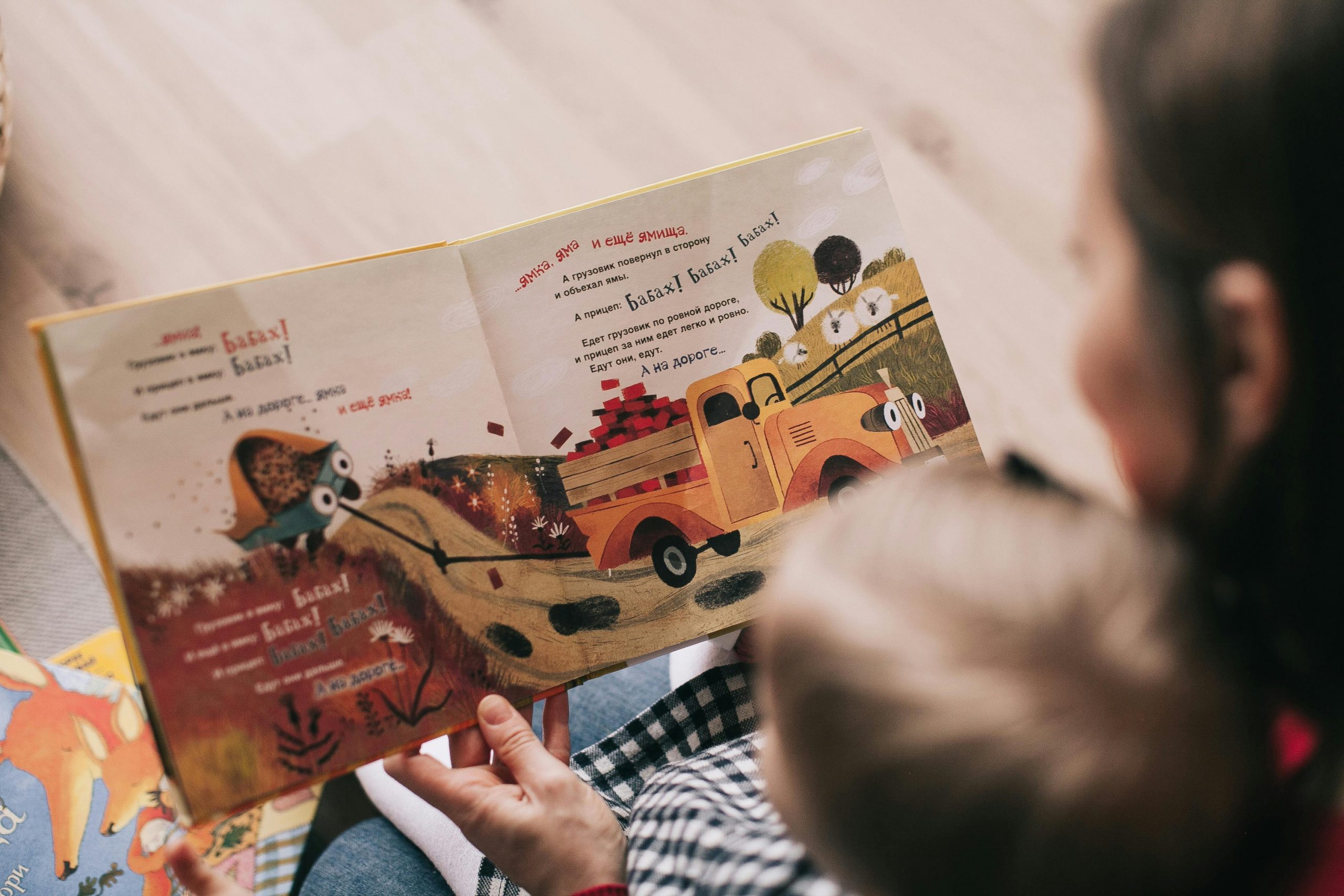
Reading is one of the most important skills your child will ever learn. It opens the door to learning, builds confidence, and helps kids succeed in school and life. But if you’re a parent wondering when do kids start reading, you’re not alone. Every child develops at their own pace, but there are some general milestones most children follow.
In this guide, we’ll break down the typical stages of early reading development—from toddler years to early elementary school. You’ll also learn how to support your child at each step, what signs show they’re ready to read, and what to do if they seem to be falling behind. Whether your child is just starting to recognize letters or already sounding out words, this guide will help you encourage strong reading habits from the start.
When Do Kids Start Reading? An Overview by Age

Children don’t usually learn to read overnight. Reading skills build slowly and start long before a child reads their first book on their own. Here’s a look at what to expect by age group:
Ages 0–2: Early Exposure to Language
Babies and toddlers are not reading yet, but this stage is still important. They learn to:
- Listen to language
- Recognize sounds and rhythms
- Respond to books with pictures and rhymes
How to help:
- Read aloud every day
- Use books with large pictures and simple words
- Talk to your baby often to build vocabulary
Ages 3–4: Pre-Reading Skills
Preschoolers begin to understand that print has meaning. They may:
- Recognize their name in writing
- Memorize and recite parts of familiar books
- Start to learn the alphabet
How to help:
- Sing alphabet songs
- Play rhyming games
- Let your child “read” by retelling stories with pictures
Ages 5–6: Beginning Reading
This is when most kids officially start reading. In kindergarten or first grade, children typically:
- Match letters to sounds (phonics)
- Sound out simple words
- Begin reading simple books
How to help:
- Practice sight words
- Read short books together daily
- Encourage sounding out unknown words
Ages 7–8: Developing Reading Fluency
At this stage, kids become more confident readers. They:
- Read full sentences and paragraphs
- Improve speed and accuracy
- Begin to read for understanding, not just decoding
How to help:
- Ask questions about the story
- Let them choose books they enjoy
- Continue reading aloud together for fun and fluency
Signs Your Child Is Ready to Start Reading
While most children begin reading around age 5 or 6, readiness can vary widely. Some kids show interest and ability earlier, while others may take a bit more time. What matters most is recognizing the signs that your child is developmentally ready to start reading. Here are several indicators to look for:
- Knows most letters and the sounds they make: Your child can identify uppercase and lowercase letters and knows the sounds associated with them. For example, they know that “B” says “buh.”
- Can rhyme words (cat, hat, bat): Rhyming is an early sign of phonological awareness, which is key to learning how words work and sound.
- Understands that words are made of sounds (phonemic awareness): They can break words into individual sounds, like knowing that “dog” has the sounds /d/, /o/, and /g/.
- Pretends to read books by telling the story from pictures: Your child enjoys flipping through books and retelling the story using the pictures, showing a strong connection to story structure.
- Shows interest in books and stories: They ask to be read to, pick out books on their own, or talk about characters and events in stories.
If your child is displaying several of these behaviors, it’s a great time to begin introducing reading activities at home or encouraging more structured reading at preschool or kindergarten. Starting when your child is ready can help build confidence and a lifelong love of reading.
How to Support Early Reading at Home
You don’t need formal training to help your child become a confident and enthusiastic reader. With a few simple habits, you can create a home environment that encourages curiosity, literacy, and a love for books. Supporting early reading doesn’t require expensive tools or hours of instruction—it’s about making reading a natural and enjoyable part of daily life. Whether your child is just learning letters or already recognizing simple words, your involvement plays a big role in their progress.
Here are some easy and effective ways to support early reading at home:
- Read Aloud Daily
Reading aloud is one of the most powerful tools for building early literacy. It strengthens your child’s vocabulary, comprehension, and listening skills. Plus, sharing a story together builds a positive emotional connection to books. - Create a Reading Routine
Children thrive on routine, and setting a regular time for reading helps develop consistency. Try reading after breakfast, before naps, or as part of the bedtime routine. - Let Kids Pick the Books
Giving your child the freedom to choose books—whether it’s a picture book, comic, or nonfiction—helps keep their interest high. When kids are excited about what they’re reading, they’re more likely to engage. - Use Letter and Word Games
Playful learning helps build early reading skills. Try games like “I Spy” with beginning sounds, matching letter cards, or rhyming games that boost phonemic awareness. - Keep Books Around the House
Make books easy to access by keeping them in various rooms, baskets, or shelves at your child’s eye level. A home filled with books encourages curiosity and shows that reading is a normal, valued activity.
Common Questions About When Kids Start Reading
Is it okay if my child isn’t reading by kindergarten?
Yes! Every child learns at their own pace. Some kids start reading as early as 4, while others are closer to 7. What matters most is consistent support and exposure to books.
Should I worry if my child doesn’t like reading?
Not necessarily. Try different types of books—nonfiction, comics, or joke books. Sometimes it’s just about finding the right fit.
What if my child is struggling with reading?
Talk to your child’s teacher and consider a reading assessment. Some children may have learning differences like dyslexia and may benefit from early intervention.
The Role of Schools in Teaching Reading

While home support is important, schools play a key role in teaching children how to read. Most kids receive formal reading instruction in kindergarten and first grade. Schools focus on:
- Phonics (letter sounds)
- Vocabulary
- Comprehension strategies
- Reading fluency
Teachers often use structured programs and assessments to track reading progress. If your child needs extra help, many schools offer reading specialists or tutoring programs.
Milestones to Watch For
Reading development happens in stages, and while every child is unique, there are common age-based milestones you can look for. Understanding what’s typical at each stage can help you support your child and celebrate their progress.
- Ages 0–2: Children at this age enjoy listening to stories and looking at colorful pictures. They may babble along with you or point to familiar images in the book. While they’re not reading yet, they are learning important early language and literacy skills.
- Ages 3–4: Preschoolers begin to recognize letters, enjoy rhyming games, and often pretend to read by using pictures to tell a story. This stage builds a strong foundation for future reading skills.
- Ages 5–6: Most kids start sounding out simple words and reading basic books. They begin matching letters with sounds and can read short sentences with some help.
- Ages 7–8: Children become more fluent readers. They can read full paragraphs and start to understand the details and meaning behind the stories they read.
Keep in mind that these are general guidelines. Some children may reach milestones earlier or later, and that’s completely normal. The key is consistent support and encouragement.
What If My Child Shows No Interest in Reading?
Not every child takes to reading right away, and that’s completely normal. Some children may find books boring, too hard, or just not as fun as other activities. But that doesn’t mean they won’t grow into strong readers. The key is to keep the experience positive, low-pressure, and tailored to your child’s interests. Reading should feel like an adventure—not a chore. With patience and creativity, you can help spark curiosity and make reading something they look forward to.
If your child isn’t interested in reading yet, try these strategies:
- Let them explore books in different formats: Not all kids enjoy traditional books. Offer graphic novels, comics, audiobooks, or interactive eBooks to see what captures their attention. These still build vocabulary and comprehension.
- Connect books to their favorite interests: If your child loves dinosaurs, superheroes, or trucks, look for books that center around those themes. When kids see familiar topics, they’re more likely to engage.
- Be patient and keep reading fun, not forced: Avoid turning reading into a power struggle. Instead, keep it light and enjoyable. Try silly voices, take turns reading, or snuggle up together during story time.
- Celebrate small wins and build confidence: If they read a word on their own, praise them. If they sit through a full story, give them a high five. Confidence builds interest, so recognize every little step forward.
With encouragement and the right materials, even a reluctant reader can develop a love for books. Stay consistent, be supportive, and remember—every reader blooms in their own time.
When Do Kids Start Reading Independently?
Most kids begin reading short books independently around age 6 or 7. However, they still benefit from reading aloud with an adult. Reading together helps with:
- Vocabulary development
- Comprehension skills
- Confidence and fluency
Encourage independence but continue to be involved. Ask questions, talk about stories, and praise their progress.
Conclusion
So, when do kids start reading? Most children begin to read between ages 5 and 7, but the journey starts much earlier through listening, talking, and playing with words. By understanding each stage of reading development and supporting your child at home, you can build a strong foundation for lifelong learning.
Every child learns at their own pace, so focus on progress, not perfection. With encouragement, patience, and a lot of good books, your child will become a confident and joyful reader in no time.
